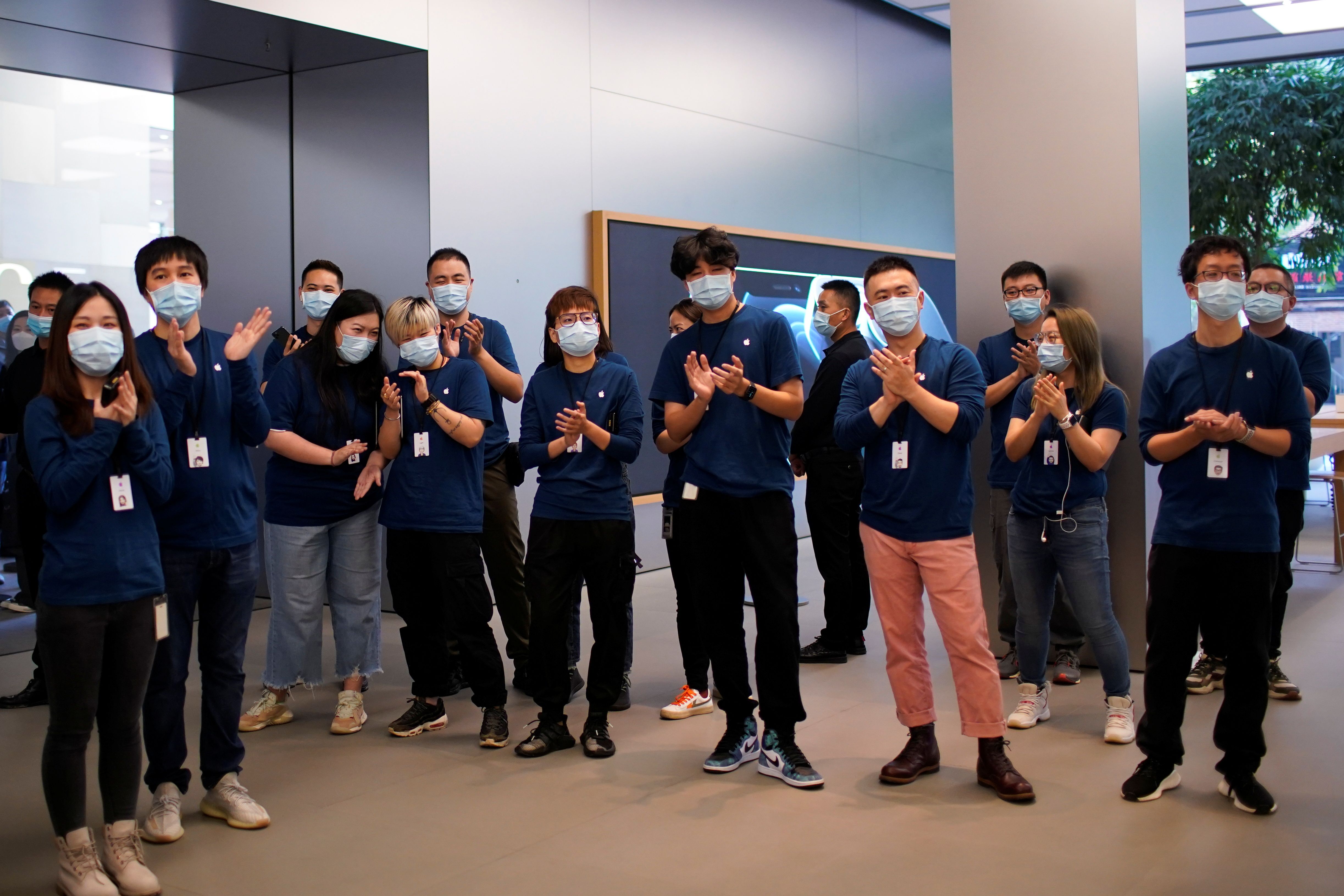
Currently, about several dozen COVID-19 cases a day are officially recorded in China. The authorities’ attention is focused on the recovery of the economy, worsened by the pandemic. Work is underway on a new five-year plan (2021–2025), which will be discussed during the plenary session of the Central Committee of the CCP (26–29 October). Personnel changes within the party have also continued, strengthening Xi Jinping’s position ahead of the 20th Party Congress in 2022.
Economic and Social Difficulties
The biggest challenge for China is its GDP structure, not the growth rate. OECD forecasts indicate that the pandemic will not significantly translate into a decline of China’s GDP growth in 2020—expected to be 1.5–2.7%, with the Chinese authorities predicting even 5% growth. However, it is too weighted to production, which today has lower potential, and not enough consumption. Post-pandemic preventive actions (including public investment increasing debt) further aggravate the problems. For example, China chose not to reform the state sector, in part because party interests, therefore, in order to prevent unemployment from rising and keeping it at around 8%, it subsidises production. In August, industrial production significantly exceeded retail sales, unlike before the pandemic. Consumption may pick up slightly in the last quarter of 2020 as tourist activity across China increases during the holiday week in October after the lifting of restrictions from the first wave of the pandemic. Excess production is exported abroad, however sales prospects are low given the falling incomes of consumers around the world because of the pandemic and restrictions, and also the reluctance of states to cooperate with China—including the construction of 5G networks. The situation is further complicated by U.S. sanctions that have cut off Chinese companies from the American market and global supply chains. This threatens, for example, Huawei’s expansion globally due to a lack of access to semiconductors.
Subsidising production is also associated with greater debt. The problem is not so much the size of public debt, which in May 2020 was around $5 trillion (nearly 50% of Chinese GDP), but the accumulated debt of the public and private sectors, amounting altogether to around 300% of GDP. The structure of state indebtedness of entities, including a diverse non-banking sector, which often makes it difficult to identify creditors and the repayment itself, means there is greater pressure to take out more loans.
The problem in the manufacturing sector is aggravated by low consumption and costs also present before the pandemic, such as healthcare payments. The middle class is becoming poorer as a result of both job losses and difficulties in creating new jobs after the first wave of the pandemic. In August, unemployment in cities was officially 5.6%, and in real terms probably even over a dozen percent. The problem was signalled by the record 3 million applications from candidates for the Chinese army in 2020.
The public’s mood is strained by rising food prices—by 11.2% in August—resulting from the pandemic and natural disasters, including floods in the Yangtze Basin. This problem may worsen and lead to a shortage of pork or corn. In addition, there are growing problems with the payment of wages, even in the public sector, for example, teachers’ salaries.
The CCP
The economic problems affecting the Chinese middle class threaten the legitimacy of the Chinese authorities, in particular the standing of Xi Jinping. Cai Xi, former rector of the Central Party School who is living in exile, spoke recently about the very negative moods in the party. Many members are increasingly concerned about criminal convictions of officials in the CCP, for example, for criticizing Xi on social media. One such case is Ren Zhiqiang, the son of the former deputy minister of commerce, an entrepreneur, and a blogger with an audience of over a million, who in September was sentenced to 18 years in prison for such criticism.
The way the party goes about calming public moods and increasing loyalty among the party apparatus includes mobilisation around nationalist-patriotic ideas, as seen at the September conference of CCP on Xinjiang policies. Members of the Standing Committee of the Politburo participated in it, which was meant to symbolise their support for Xi. The nationalist idea is bolstered by, for example, limiting teaching of minority languages in schools, including Mongolian and Korean. At the same time, Xi is tightening control over the judiciary and the security apparatus. In June, the Political and Legal Affairs Commission of the Central Committee (PLAC) announced a disciplinary and educational campaign for officials in this sector. Commission officials in the provinces also keep losing their posts.
The Plans for Change
The Chinese leadership explains the economic and social problems as the fault of the West, especially the United States. Their solution is to enact a new five-year plan and tighten CCP control over state institutions. The government will most likely declare GDP growth of around 6% per annum in the plan, which is to herald a reduction in public investment, and thus debt. With various nations urging companies withdraw production from China and the separation of Chinese companies from suppliers, the Chinese authorities emphasise that the internal market will be more important. They want to emphasise the importance of such sectors as those related to 5G networks, data centres, electric vehicle charging stations, the development of artificial intelligence.
The authorities will focus on further anti-corruption campaigns, resignations and promotions to increase the loyalty of the apparatus. Among the recent cases is Dong Hong, accused of corruption, and for many years a close associate of Wang Qishan, the current vice-president of China. In 2021, the party may take on the case of Meng Jianzhu, a former member of the Politburo and chairman of the PLAC, on suspicions of bribery and abuse of power. This campaign would culminate in ensuring the loyalty of the apparatus to Xi for him to be re-elected as the party’s secretary-general in 2022 and as China’s president in 2023.
Conclusions
The solutions proposed in the five-year plan, combined with the anti-Western attitude, will deepen the sectoral, but still continual isolation of the Chinese economy from the outside world. Focusing on the domestic market is not a new proposal, rather a dusted-off concept of activating the middle class in China to achieve greater consumption. However, it has little chance of success with the increasing role of the CCP in the economy and the ageing of the population, which will continue to save and not spend due to the weakness of the social security system and low incomes. As a result, it will be difficult to stimulate consumption, and the authorities, especially after the pandemic and despite their declarations, will continue to focus on public investment in order to demonstrate economic growth and the effectiveness of their policies. This process will mean further problems with the stabilisation of the economy, especially with possible problems of public entities with the repayment of debt. The likelihood of default may increase the already high social unrest.
With growing internal problems, a compromise between the Chinese authorities in relations with the EU is unlikely. Greater market opening or a reduction in state subsidies (and their transparency) for Chinese enterprises, which the EU is demanding from China, would constitute an additional burden on the already inefficient economy. Additionally, it would be an expression of Xi’s weakness—bending under pressure from abroad—which, given the current nationalist-patriotic policy, he cannot afford to implement in his economic plans to extend his power in 2022. At least until then, increasing the CCP’s control over the state and the economy will remain the authorities’ priority.
China’s authorities are also waiting for the results of the U.S. elections. A victory for the Democratic challenger, Joe Biden, and a chance for more compromise with China compared to President Donald Trump could temporarily induce the Chinese authorities to curb their anti-Western rhetoric. Xi could use Biden’s willingness to engage in dialogue with China in the domestic arena as proof of the success of his policy towards the U.S. and to calm public moods. However, this does not mean giving up the global competition with Western countries, which is necessary to maintain the regime.




